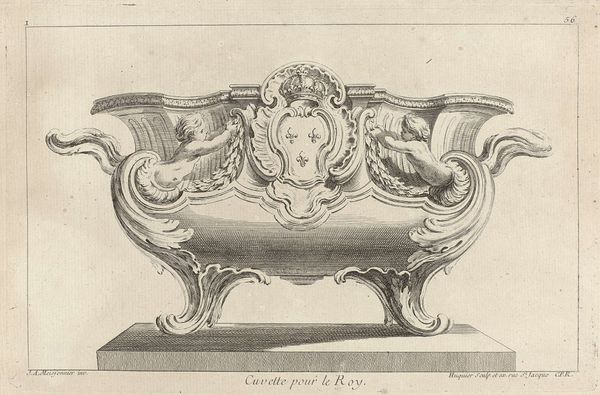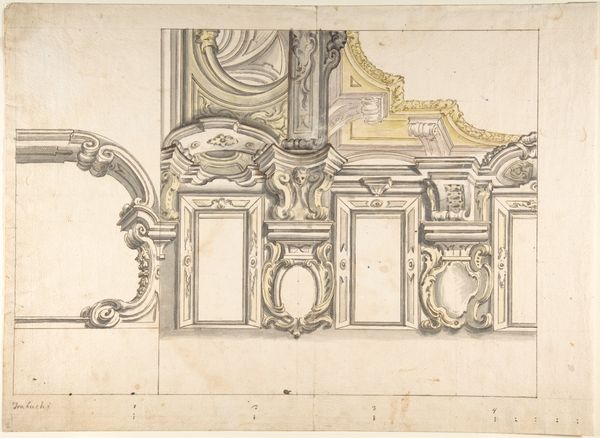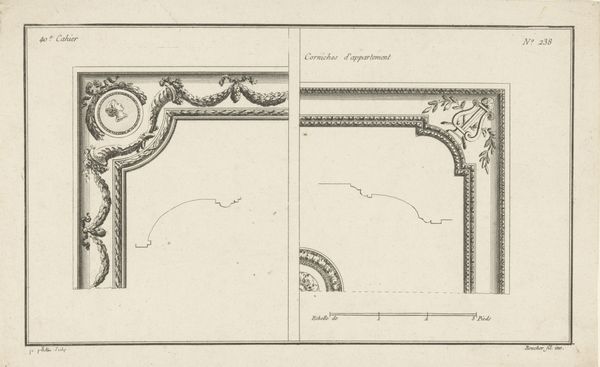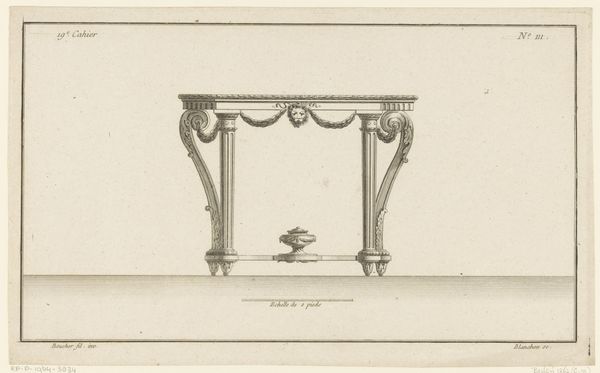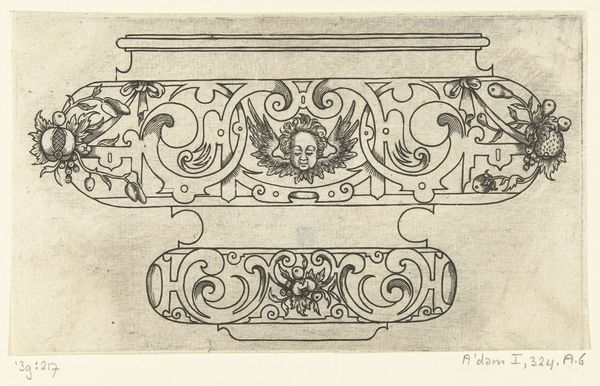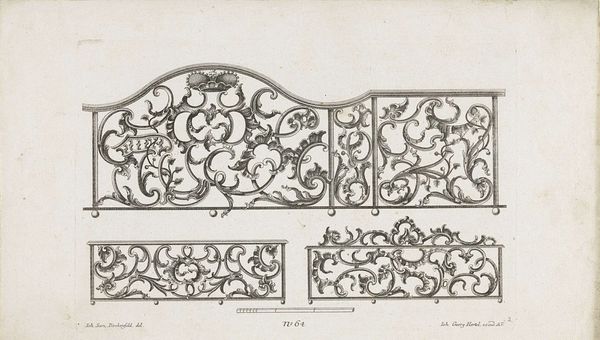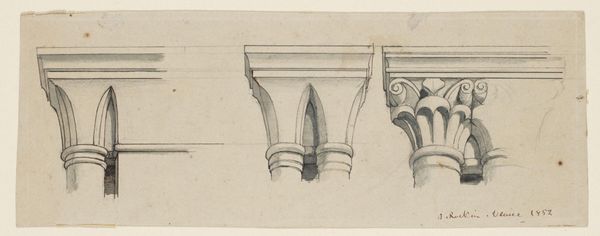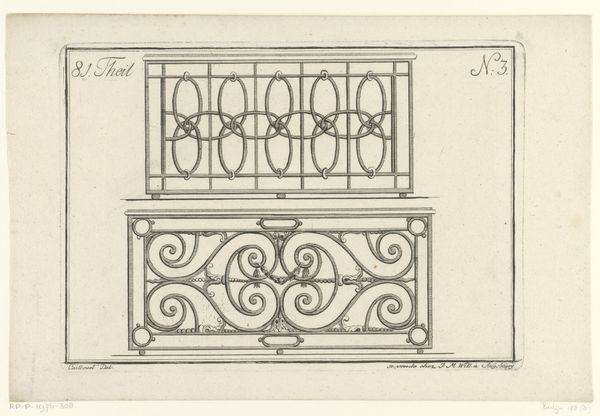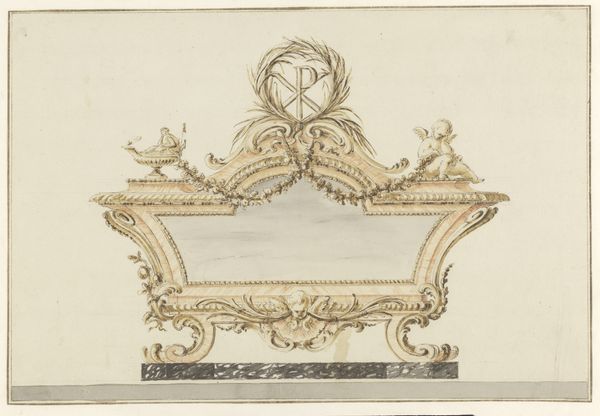
drawing, print, engraving, architecture
#
drawing
#
table
#
baroque
# print
#
form
#
line
#
decorative-art
#
engraving
#
architecture
Dimensions: height 184 mm, width 267 mm
Copyright: Rijks Museum: Open Domain
Editor: Here we have Gabriel Huquier’s "Ontwerp voor een wandtafel met twee lades," a design for a wall table with two drawers, dating from 1738 to 1749. It’s a detailed engraving that seems almost architectural in its precision. The table design itself feels very ornate, almost excessively so. What stories can you unpack from a piece like this? Curator: Let's start by situating this table within its socio-historical context. The Baroque period was a time of immense social stratification, and the decorative arts often served to reinforce these power dynamics. What do you notice about the table's design that might reflect this? Editor: Well, the level of detail is pretty striking, with the sculpted face and all the swirling embellishments. It definitely doesn’t look mass-produced or particularly functional, more like a status symbol. Curator: Exactly! The Baroque aesthetic embraced lavishness and complexity. These highly ornamented pieces signaled wealth, privilege, and, consequently, power. Considering this was intended as a wall table, how does it interact with ideas of gender and domesticity? Editor: It feels almost performative – less about utility and more about display. I can imagine this in a grand salon, reinforcing the power of the owner. Were there specific gendered associations with these kinds of objects and spaces? Curator: Absolutely. These "cabinets" were often spaces associated with women, where they conducted correspondence and received guests. Think about the implications: a woman's world literally framed by displays of wealth and status, subtly dictating acceptable forms of femininity and social engagement. How might a feminist theorist approach analyzing such a design today? Editor: It really highlights the ways in which power, gender, and social class were interwoven into the very fabric of everyday objects. It's far more than just a table design! Curator: Precisely. By exploring the cultural and historical contexts, we see that even something seemingly benign, like a furniture design, becomes a loaded site of social and political meaning. It asks us to reflect on how design still shapes our experiences today.
Comments
No comments
Be the first to comment and join the conversation on the ultimate creative platform.
